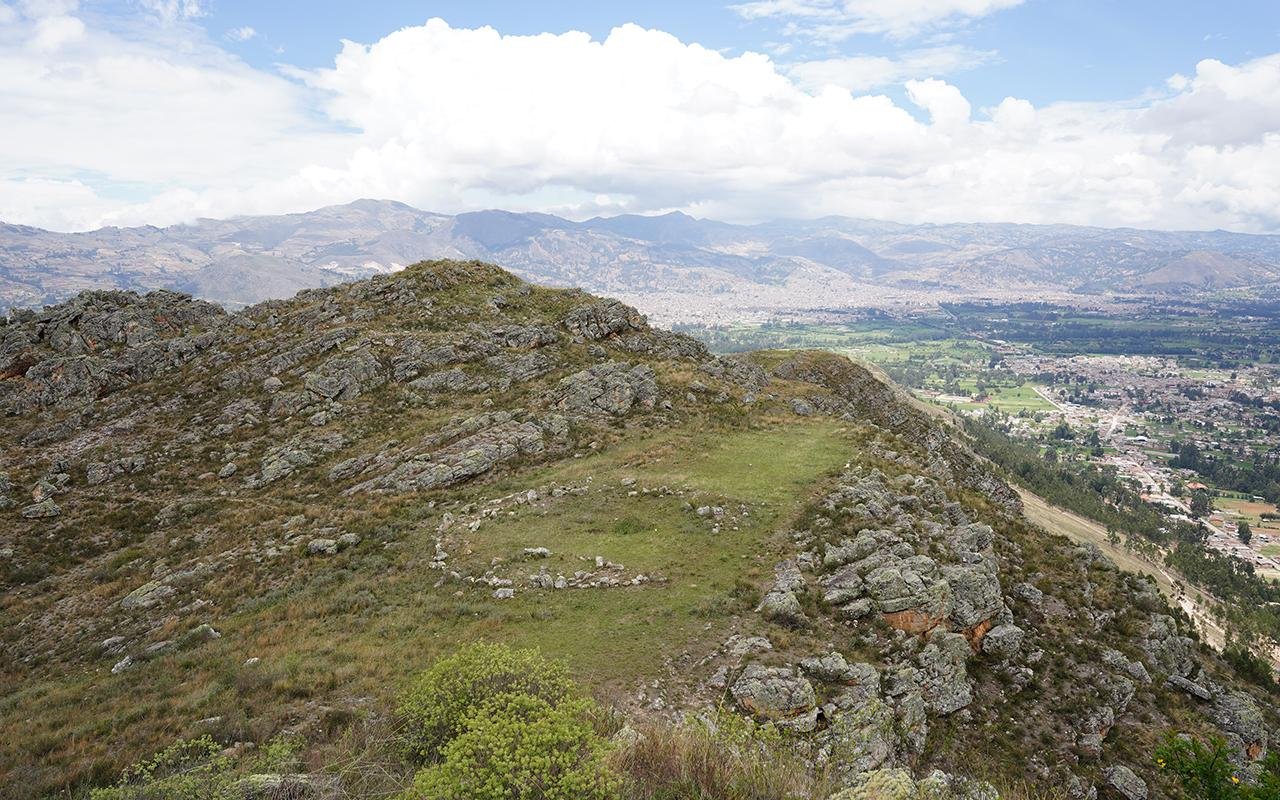Latin America
Related: About this forumAncient 4,750-Year-Old Megalith Discovered On Peruvian Mountain
PUBLISHED
2 days ago
The unique circular plaza is one of the earliest ever found in the Americas.
author
MADDY CHAPMAN
Edited by Francesca Benson

What remains of the ancient plaza today.
Image credit: Toohey et al., Science Advances, 2024 (CC BY-NC 4.0)
An ancient ceremonial megalith dated to 4,750 years ago has been discovered in the Peruvian Andes. The find is older than the Great Pyramids of Egypt and represents one of the oldest circular plazas in the region.
Unearthed at an archaeological site called Callacpuma in northern Peru’s Cajamarca valley, the plaza measures around 18 meters (60 feet) across and features concentric walls of large, free-standing, vertically placed megalithic stones, the likes of which have never been seen before in the Andes.
Having been the subject of archaeological interest for nearly 60 years, the site has now been excavated and subjected to radiocarbon dating, placing its construction between 2632 and 2884 BCE, during the Late Preceramic period. This dating makes the plaza one of the earliest examples of monumental, megalithic architecture in the Americas.
“This structure was built approximately 100 years before the Great Pyramids of Egypt and around the same time as Stonehenge,” Associate Professor Jason Toohey, who led the project, said in a statement.
More:
https://www.iflscience.com/ancient-4750-year-old-megalith-discovered-on-peruvian-mountain-73114
~ ~ ~
Archaeologists Discover Mysterious Stone Circle Built Before Great Pyramids
Published Feb 28, 2024 at 3:55 PM EST
By Aristos Georgiou
Science and Health Reporter
Archaeologists have discovered a mysterious stone circle in the Andes Mountains that they say was constructed before the great pyramids of Egypt.
The circular stone plaza, which measures around 60 feet in diameter, consists of two concentric walls made from unshaped stones set vertically in the ground, according to a study reporting the find in the journal Science Advances.

The monument is at the Callacpuma archaeological site in northern Peru's Cajamarca Basin, which lies around 10,000 feet above sea level near the summit of a peak in the Andes. Stretching for more than 5,000 miles along the western edge of South America, the Andes range is the longest in the world.
Using radiocarbon dating techniques, researchers determined that initial construction of the circular plaza took place around 4,750 years ago, corresponding to the "Late Precaremic" period of Andean archaeology.
More:
https://www.newsweek.com/archaeologists-discover-mysterious-stone-circle-built-before-great-pyramids-1874439?piano_t=1
Judi Lynn
(162,705 posts)Feb 19, 2024 by Enrico de Lazaro
A team of anthropologists from the University of Wyoming, the University of California, Santa Barbara and the University of New Hampshire has discovered a 4,750-year-old megalithic circular plaza measuring 18 m (60 feet) in diameter at Callacpuma in the Cajamarca basin of Peru. This is one of the earliest known monumental and megalithic structures in the northern Peruvian Andes and one of the earliest examples in the western hemisphere.
Monumental architecture is central to many aspects of human social organization and the development of social complexity, yet the drivers of its origins remain poorly understood.
This form of architecture is purposefully constructed to be larger and sometimes more elaborate than is needed given its intended function.
The world’s earliest ceremonial monumental architecture, whether represented by alignments of megalithic stones, large platforms and buildings, or bounded plazas, were the results of communal or corporate action, by groups larger than immediate households and often larger than the population of the local area.
Early, well-known examples of ceremonial architecture of this kind include Gobekli Tepe in Turkey, Stonehenge in England, and the great pyramids of Giza in Egypt, which were constructed by 9,000 BCE, 2900 BCE, and 2650 BCE, respectively.
Gobekli Tepe is particularly important here as it was constructed during the Pre-pottery Neolithic by hunting-gathering-foraging peoples on the cusp of sedentary life and food production.
More:
https://www.sci.news/archaeology/callacpuma-plaza-12699.html
Easterncedar
(3,707 posts)Smiley winky face
Judi Lynn
(162,705 posts)
(That non-intervention thing from Star Trek didn't do ancient native citizens a lot of good, did it? They could have at least given them the 3 Stooges Eye-Poke!)
